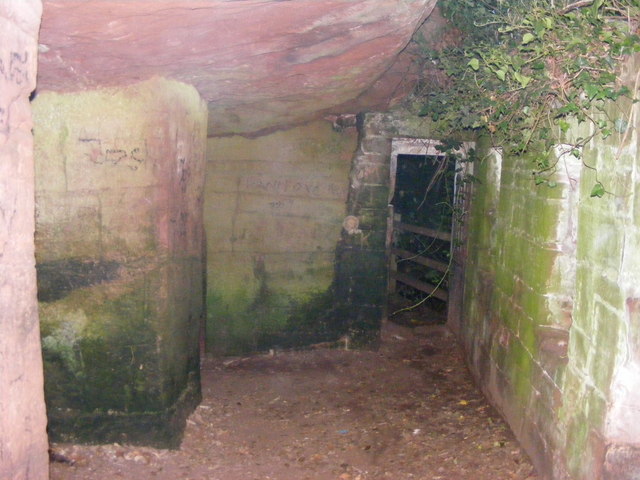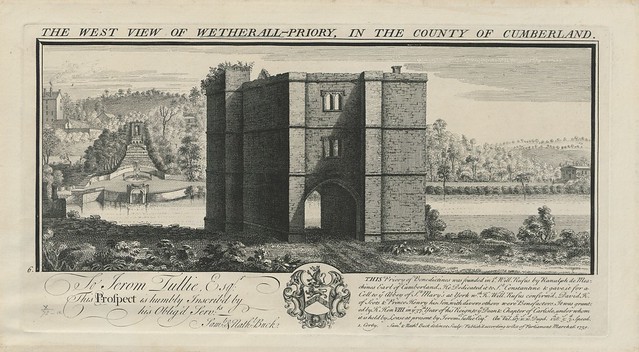Topics > Northumberland > Civil Parishes in Northumberland > Corsenside Civil Parish > Corsenside Parish 1855
Corsenside Parish 1855
Extract from: History, Topography, and Directory of Northumberland...Whellan, William, & Co, 1855.
CORSENSIDE PARISH is bounded by Bellingham, Elsdon, Kirkwhelpington, and Chollerton, and is intersected by the river Reed. It is about 6 miles long by 4½ broad, and comprises an area of 11,132 acres; rateable value, £6,193 10s. The population in 1801, was 375; in 1811, 424; in 1821, 487; in 1831, 524; in 1841, in consequence of the prosperous state of the iron works, it had increased to 1108; and in 1851, the stoppage of the same works reduced the population to 579 souls, half of the inhabitants having left the parish. The land on the east and west sides of this district are bleak, Moorish, and sterile, but near the river the soil is of a light gravelly nature, and produces abundant crops of grass and corn. Both coal and limestone are found here. This parish is not divided into townships, but it is separated into three portions called constablewicks. The land owners are William and Henry Thompson, Richard and Paul Shanks, William Jobling, Thomas Hall, --- Gregson, Stephen Reed, Colonel Reed, Mrs Mary Dodds, Richard Shanks, William John Shanks, John Shanks, Ralph Shanks, and John Thompson, each of whom claims the manorial rights of his own property, and the Duke of Northumberland that of the common. Corsenside contains the villages of East and West Woodburn, but has not a village of its own name. THE PARISH CHURCH, a small stone edifice of great antiquity, is pleasantly situated on the northwest side of the parish, 5½ miles North East by North of Bellingham. The living was formerly the property of Holystone Priory, but is now a discharged vicarage in the archdeaconry of Northumberland, and Deanery of Bellingham, valued at £3 1s. 3d, returned at 80 pounds; Draws income £224. Tithes commuted at 1839, aggregate amount £174. Patron, Mrs Bewick; Incumbent, the Rev. W Kelly, B.A. The parish registered commences in 1726 .
WOODBURN EAST is a village in this township, situated on the east side of the Reed, 5 miles north east by east of Bellingham, at the confluence of the Burn from which it derives its name. Here is a National School, erected by subscription in 1854, at a cost of £200. It is principally supported by the Duke of Northumberland and the Rev. W H Wilson.
WOODBURN WEST, another village in this township, stands on the West side of the Reed, 4½ miles northeast of Bellingham. The scenery in this neighbourhood is very picturesque, especially on the banks of the Reed, and the Woodburn rivulets, which unite near the village. To the east, the towering heights of Otter Caps are seen, while on the West, the view is terminated by a long range of hills, which rise in various forms and attitudes, and extend hence to Scotland. The rock called Darnock Craig, in which there is a fine natural cave containing a spring of excellent water, is situated on the north side of the parish. The village of West Woodburn possesses a school which was erected by subscription in 1816, upon ground given by the late Rev. Anthony Hedley. There are two tile works situated in this parish, one at Chesterhope, carried on by Messrs. Robert Riddell and sons, and the other at Broadgate, the property of Mr George Dixon. Lanehead waterfall and Shooting Box, the property of William Jobling Esq. are much resorted to for their picturesque scene.
RISINGHAM, the ancient Habitancom, is situated on a rising ground and close to the Watling Street, about half a mile South West of West Woodburn,. It's walls stand upon, or enclose nearly four acres and a half of dry, rich ground on the southern margin of the river Reed. Numerous altars and inscriptions have been lately found in this neighbourhood and have been removed to the museum at Newcastle. In 1840, Mr Richard Shanks of Parkhead, discovered the remains of some baths at the southeast corner of the station. Camden says, Risingham means the “Giant’s” habitation and he also tells us that in his time, the inhabitants had a traditional tale of the God Magon, who defended himself here, and maintained his fortress against all comers. This relation he adds, is authenticated, as to the reality of such a personage as Magon, in the ages of antiquity, by two Roman inscriptions found in the river there. The first inscription giving by Camden is as follows : “Deo Mogonti Cadenorum et Numini Domini Nostri Augusti Marcus Caius Secundinus Beneficiarius Consulis Habitanci Primas, tam prose et suis posuit”. The altar bearing this subscription is now in Trinity College Cambridge. Another inscription on an altar found here is read by Horsley:” Numinibus Augustorum, Cohors Quarta Gallorum Equitum fecit. From the remains which have been found here, and from the inscriptions ,etc., which have been brought to light, it is conclusive that this place must have been the Roman Habitancom, and that it was a station about the time of Aurelius Antoninus, and had certainly gone to decay before the reign of Caracalla but afterwards was restored.
In the Glen, about one mile E.S.E. of Risingham, is Chesterhope, where several altars, etc., have been discovered. At Park Head, a little to the north of Chesterhope, is a figure of Robin of Risingham, or Robin of Reedsdale, for it is known to the people of the neighbourhood by both names, and has given rise to several speculations among antiquaries as to whom it was intended to represent, and at what period it was carved. Warburton in his map of Northumberland, published previous to 1727, appears to have been the first who gave an engraving of it, to which he subjoins the following brief notice: “This antick figure I find cut on a rock in Risingham, in Reedsdale, called the Soldan’s Stone. This celebrated figure was cut in bold relief upon a huge block of sandstone rock on the brow of the hill, a few yards to the West of the Watling Street, and upon the estate called the Park Head. The stone was 5 sided, 6 feet on the base, eight feet high, 5 feet on the two sides to the right of the middle of its front, 7 feet on the uppermost side to the left cover and 4 on the lower, and about 6 feet in thickness. The figure itself is about four feet high; had a panel above it about 29 inches long, and 20 broad, as if intended for an inscription, and a square block or altar opposite the right knee, probably left for the same purpose. There is every reason to assign its origin to the Roman era in Britain. The Roman panel, the altar, the Phrygian bonnet, the toga, and the tunic, all point out its fabricators; and the hare it holds in the left hand, with the bow in its right are symbols plainly indicating that it was set up in memory of some great hunter. Sir Walter Scott, in his notes to Rokeby, Canto third, speaking of this figure, observes: “The popular tradition is that it represents a giant, whose brother resided at Woodburn, and he himself in Risingham. It adds that they subsisted by hunting, and that one of them finding the game become too scarce to support them, poisoned his companion, in whose memory the monument was engraven”. What strange and tragic circumstances may be conceived under this legend, or whether it is utterly apocryphal, it is now impossible to discover. The only part of Robin which now remains, is from the waist downwards, that portion of the stone which contained the trunk and head having been broken off.
POST OFFICE, WEST WOODBURN, Thomas Martinson, postmaster. Letters arrive here from Bellingham at 9:30 PM, and are dispatched at 2:30 PM.
POST OFFICE, REEDSDALE, Thomas Riddell, postmaster. Letters arrive here from Bellingham at 9:00 PM, and are dispatched thereto at 3:00 PM.
DIRECTORY
|
Anderson Mrs Diana, Seirlaw Cottage Anderson Miss Elizabeth, Woodburn Davison Mrs Eleanor, Vicarage Graham Mr. John, Seirlaw Cottage Hedley Gabriel, builder, Woodburn Lumely Miss Allen, Wood House, Woodburn Routledge Thomas, surgeon, Highy Leam Wallace George, butcher, Woodburn Academia and Schools NATIONAL, East Woodburn, Abraham Wilson, teacher WOODBURN, John Douglas, teacher Blacksmiths Davison John, Woodburn Lee Joseph, Brandy Bank Boot and Shoemakers Davison Robert, Woodburn Davison Walter, Peel Cottage Smith Henry, Yellow House Brick and Tile Manufacturers Dixon George, Broadgate Riddell Robert and son, Chesterhope farmers marked (*) are Yeoman Bell Christopher, Low Chesterhope Best John, High Park Brown and Stothert, Brandy Bank *Charter Foster, Woodburn Hill *Dodds Mary, High Leam Hindmarsh Robert, Broomhill Martinson Thomas, Woodburn Mather James, Blakelaw Murray Joseph, Cragg |
Farmers (continued) Potts Henry, Woodburn Riddell Edward and William, Low Leam Riddell Nicholas, Hair Walls Rutherford Andrew, High Shaw *Shanks Daniel, Whitston House Shanks Richard, Parkhead Thompson William and Michael, Brigg Walton Michael and William James, East Woodburn Wear Thompson, and corn miller, Woodburn mill Wheatly and Davidson, Woodburn Wood Daniel, Woodburn Townhead Wood William and Ralph, Chesterhope Grocers and dealers in Sundries Armstrong Mary, Reedsdale Davison John, Woodburn Martinson Thomas, Woodburn Miller William, and draper, East Woodburn Thomson George, Woodburn Hotels and Inns Bay Horse, Edward Riddell, Woodburn Dun Cow, Thomas Shipley, Fourlaws Fox and Hounds, John Brown, Brandy bank Queen’s Head, Dorothy Robinson, East Woodburn Beerhouse Dobson Roger, East Woodburn Joiners and Builders Martinson Alexander, Woodburn Wheatley Edward, Woodburn Tailors Robson William, and draper, Woodburn Slasor Robert, Woodburn
|
CARRIERS to Newcastle, Thomas Wear, on Wednesdays; to Hexham, John Ord and Thomas Hedley, on Tuesdays









